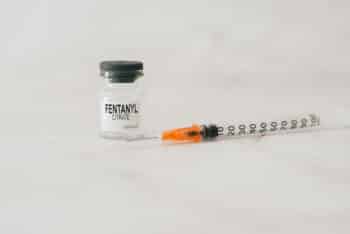Mixing Fentanyl With Other Drugs

Why Is Fentanyl Mixed With Other Drugs?
Fentanyl, a potent synthetic Opioid, has increasingly found its way into various drug supplies, with devastating consequences.
Fentanyl is frequently added to other drugs to increase its strength and because it is often cheaper to produce than other illicit drugs.
Reasons for mixing Fentanyl with other drugs include:
Economic Incentive
Fentanyl is both cheaper to produce and highly potent, which offers a significant economic advantage for illicit drug producers and distributors. By using a smaller amount of Fentanyl to mimic or enhance the effects of other drugs, distributors can maximize profits. In essence, Fentanyl allows for a larger quantity of product to be produced at a lower cost.
Increased Potency
For people seeking a more intense high, Fentanyl can enhance the effects of other drugs, making them seem more powerful. This increased potency can be attractive to some, even if they aren’t aware of the Fentanyl presence, leading to increased demand for the adulterated product.
Substitution And Imitation
As stricter regulations surround prescription Opioids, Fentanyl has been used to produce counterfeit prescription drugs. These fake pills can resemble widely known medications, deceiving people into thinking they are consuming a familiar drug, when in reality, they are consuming a pill that contains a potentially lethal dose of Fentanyl.
What Drugs Is Fentanyl Added To?
Fentanyl’s potent nature and relatively low cost have made it an attractive additive to mix with various substances. Here’s a deeper look into the drugs that are often laced with Fentanyl:
Heroin
Heroin has been a primary target for Fentanyl adulteration. The inclusion of Fentanyl intensifies the high that Heroin provides, making it more appealing. However, because both Heroin and Fentanyl are Opioids, their combined respiratory depressing effects significantly increase the risk of overdose.
Cocaine
While Cocaine is a stimulant, the opposite of an Opioid, the mixture creates a dangerous push-pull effect on the body. The stimulating effects of Cocaine combined with the respiratory depressing effects of Fentanyl can lead to unpredictable and often deadly outcomes.
Methamphetamine
Methamphetamine is a stimulant and its combination with Fentanyl has been seen in some drug markets, presenting the hazardous push-pull effects and increasing overdose risks.
Benzodiazepines
Benzodiazepines are sedatives commonly prescribed to treat anxiety or sleep disorders. Counterfeit Benzodiazepine pills can sometimes contain Fentanyl, amplifying the sedative effect and significantly increasing the risk of respiratory failure.
Counterfeit Prescription Opioids
As the crackdown on prescription Opioid misuse continues, there’s been a surge in counterfeit pills designed to mimic drugs like Oxycodone or Hydrocodone. These counterfeit pills can be nearly identical in appearance to genuine prescription medications but may contain Fentanyl, presenting severe risks to the person taking the drug.
It’s vital for consumers to understand that any illicit drug purchase poses a risk, not just from the known substance, but from additives like Fentanyl. The variability in drug purity and composition means that people can’t predict how a particular batch will affect them.
How To Know If A Drug Has Fentanyl In It
The challenge with recognizing Fentanyl is its invisibility. It is often difficult, if not impossible, to detect its presence in a drug merely by sight, smell, or taste. It’s this stealthy nature that makes Fentanyl so perilous, as people may consume their usual dose of the base drug, unaware that it’s been laced with this potent Opioid.
Testing For Fentanyl
With the increasing prevalence of Fentanyl adulteration in various drugs, it’s imperative to have mechanisms to detect its presence. Testing for Fentanyl has become more accessible thanks to the development of user-friendly tools that can detect even trace amounts of the drug.
Fentanyl Test Strips
One of the most common and accessible methods to detect Fentanyl in drugs is through Fentanyl test strips. These strips work by dissolving a small amount of the drug in water and then dipping the test strip into the solution. A positive or negative result for Fentanyl presence is usually indicated within minutes. A positive result can serve as a clear warning of Fentanyl presence, encouraging the person to exercise extreme caution or abstain from consumption entirely. The reliability of these strips has made them a staple in harm reduction strategies.
However, it’s important to remember that a negative result does not guarantee safety, as the drug might still contain other dangerous substances or the sample tested might not be representative of the whole batch.
Spectrometry-Based Testing
Advanced technologies, like spectrometry-based tools, have been developed to analyze the composition of drugs. While not as easily accessible to the general public as test strips, these tools offer a more comprehensive analysis of a substance’s content and can be found at certain harm reduction sites or facilities.
Get Help For A Fentanyl Addiction
Overcoming addiction is not merely about abstaining from substances but also understanding and addressing the underlying factors that contribute to substance use. By seeking treatment, individuals can identify these factors, rebuild their lives, reestablish connections, and look forward to a brighter, substance-free future. To explore your rehab options, contact a treatment provider today, risk free.